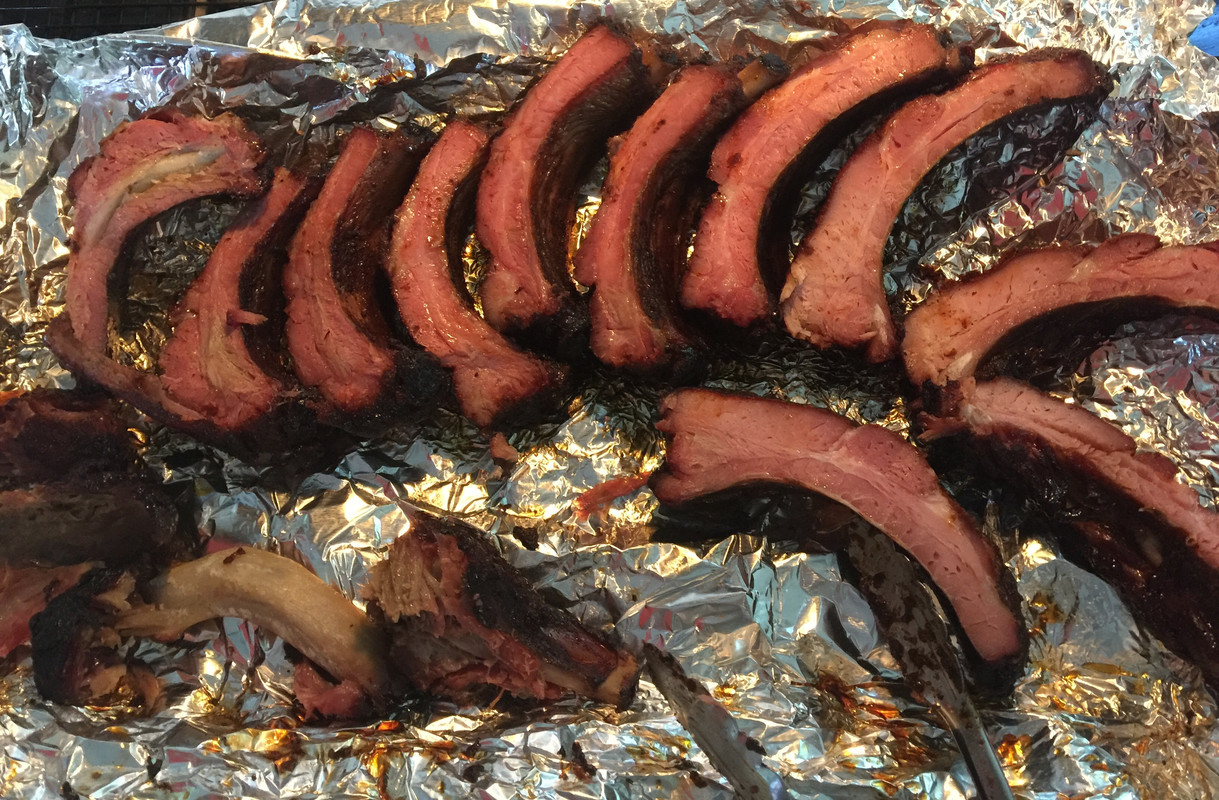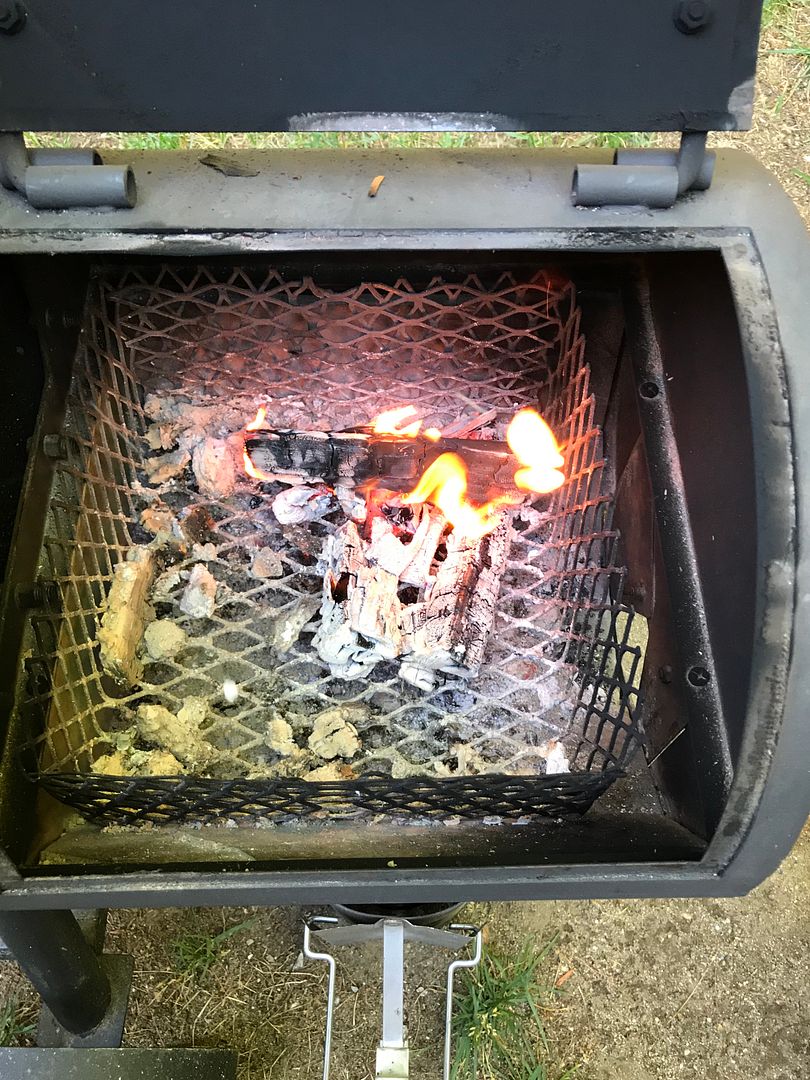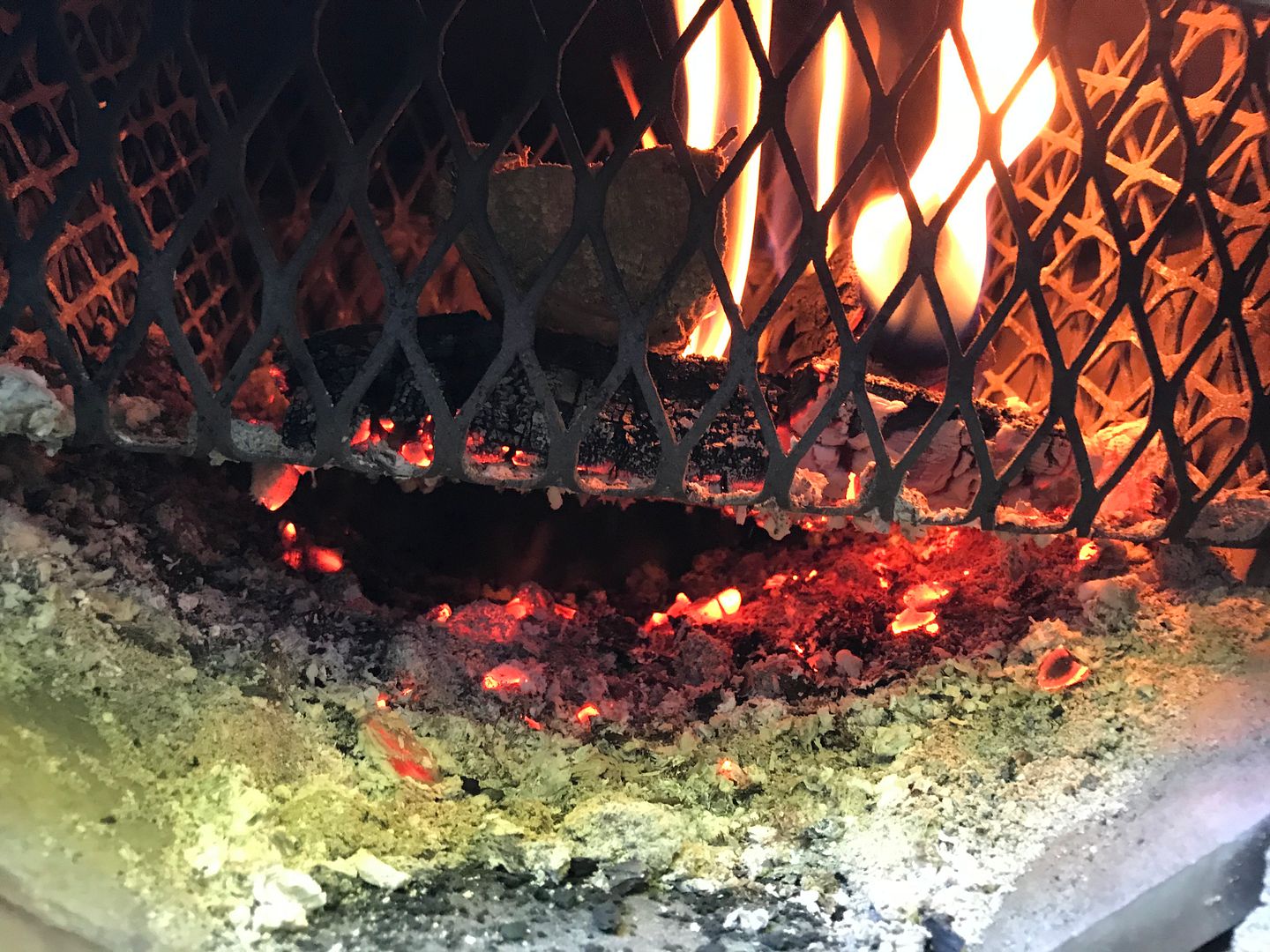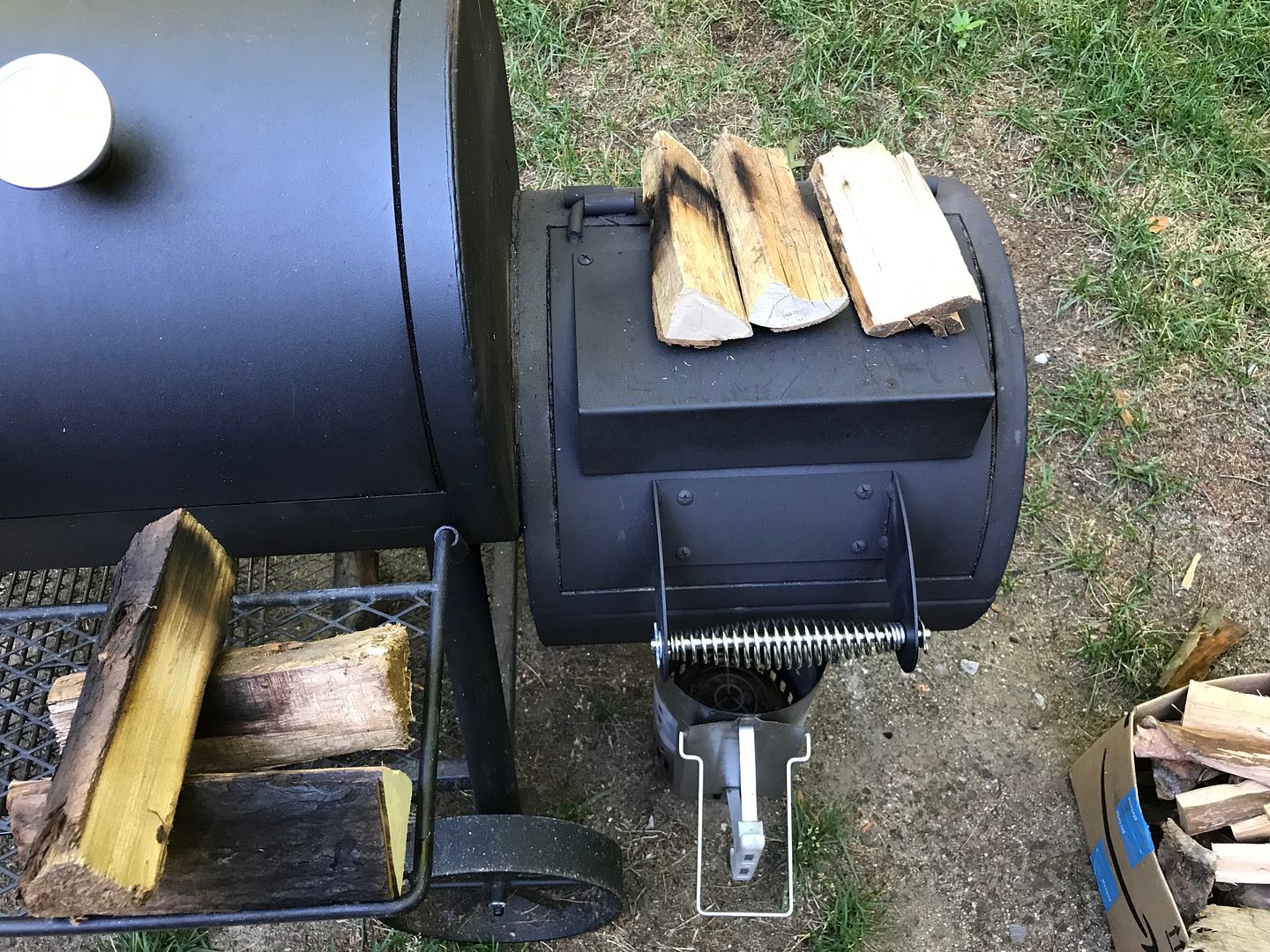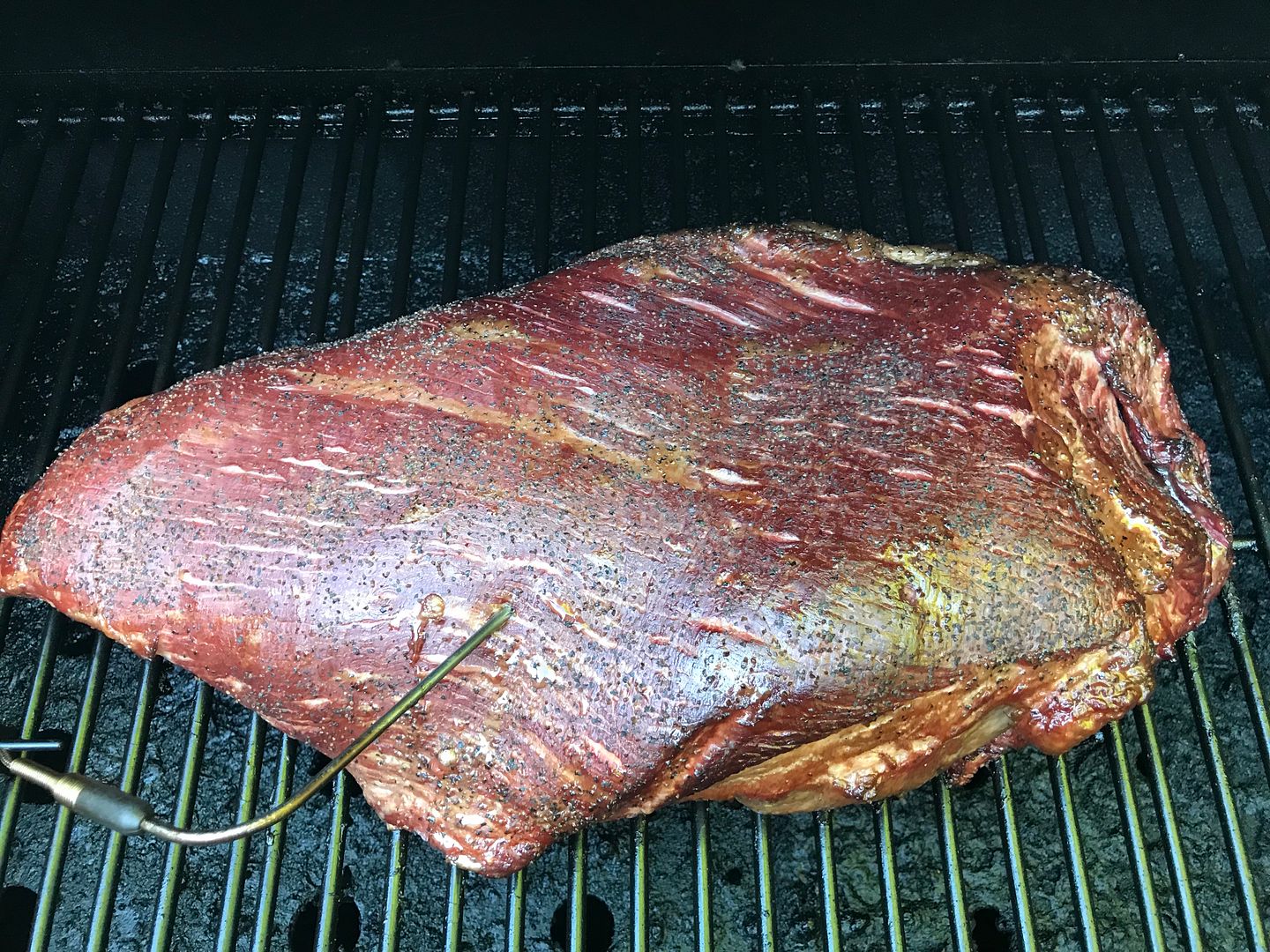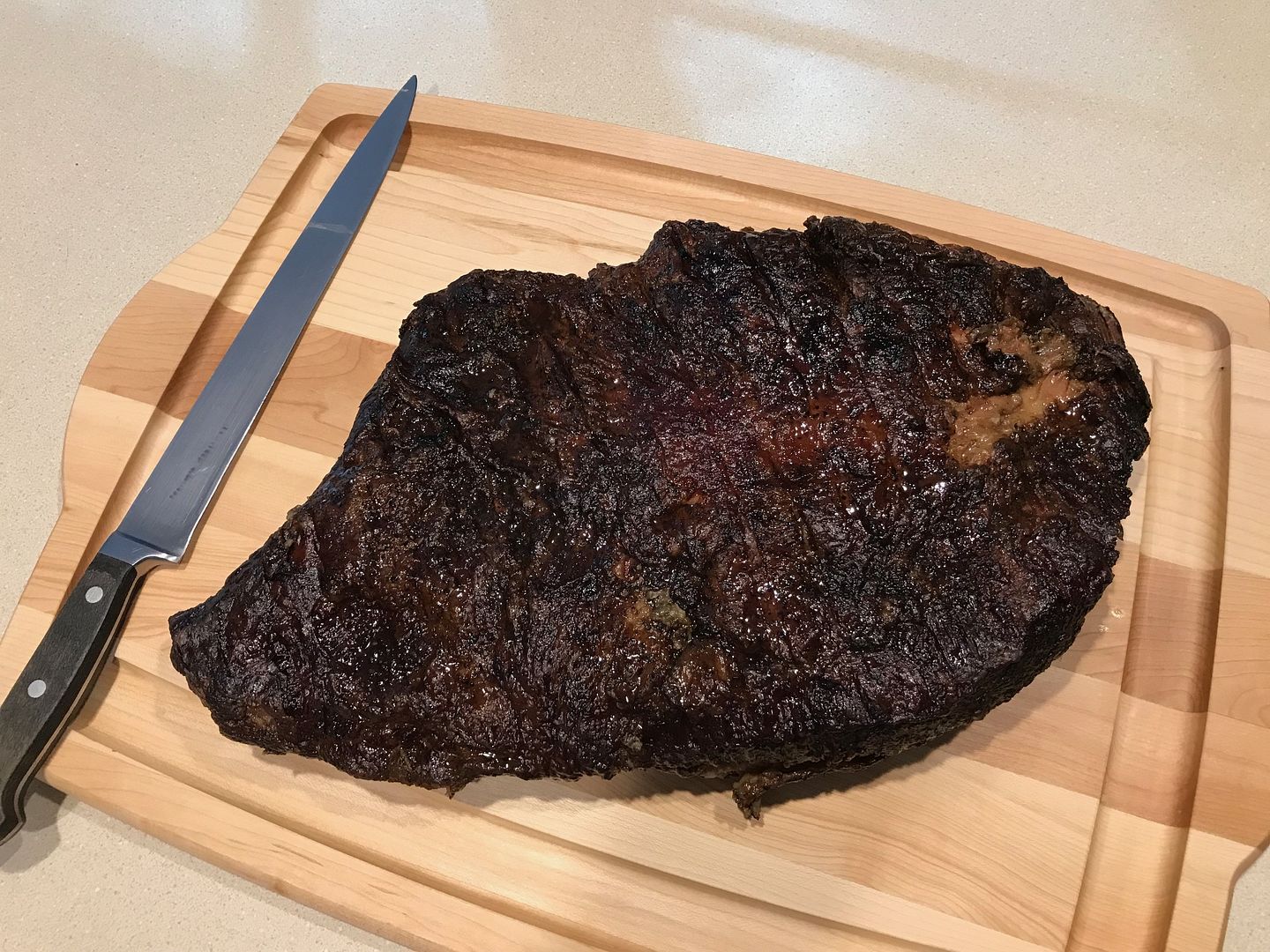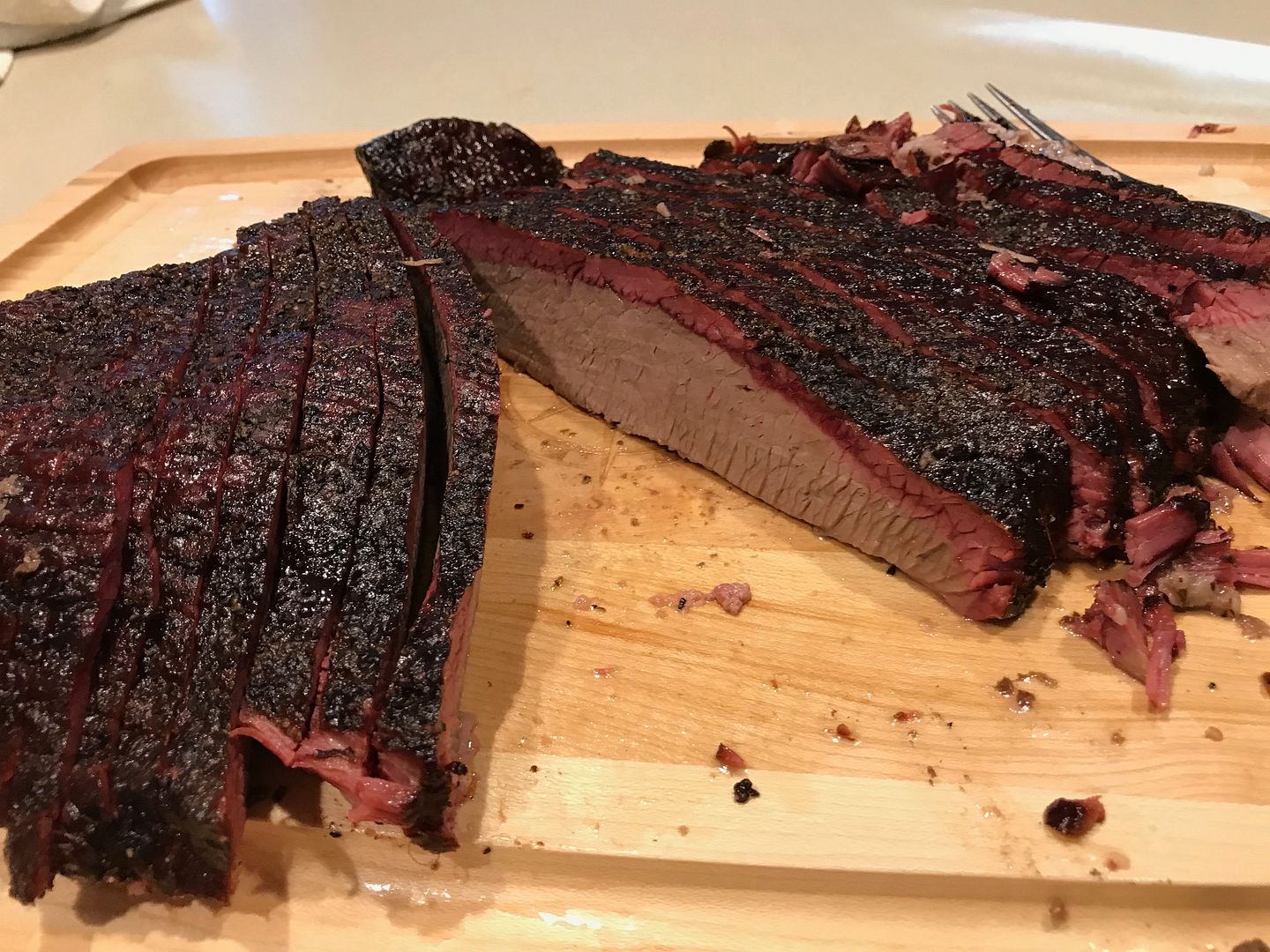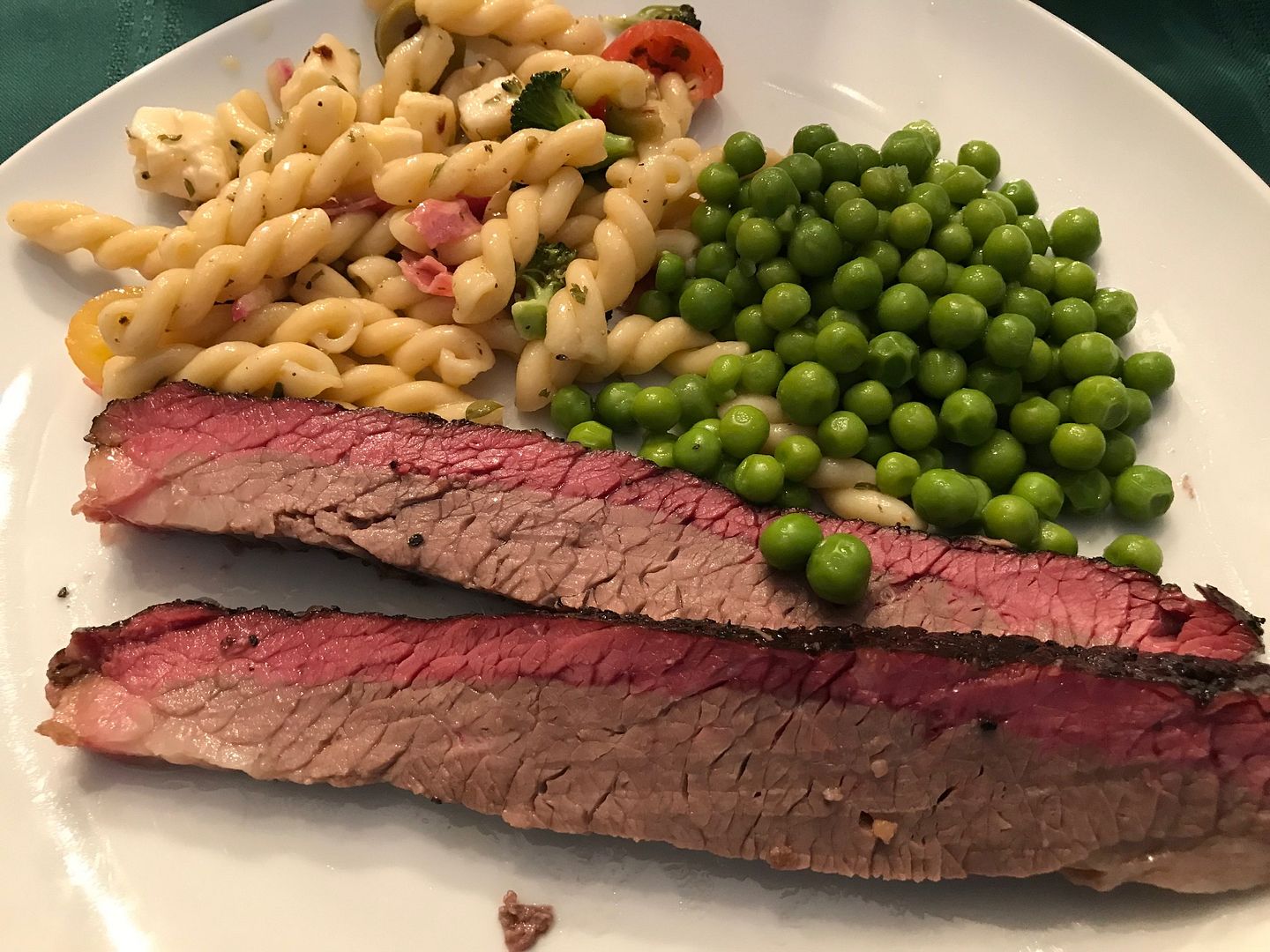Notes from my first all-wood Brisket cook on my Oklahoma Joe Highland offset smoker:
I'd cooked smaller / quicker things in the past successfully (Pork Loins, Chickens, etc.) so was able to employ some technique I had learned earlier on maintaining the wood fire. One nice thing about burning wood is it is pretty quick to get things up and rolling.
I filled my Weber Starter Chimney with lump charcoal and lit it with a single sheet of newspaper. If you've never tried lump char in a chimney you should. It gets going fast and the whole thing is fully engulfed in flames in less than 10 minutes. Dumped that into my basket and laid 3 good sized split on top to get things going. Left the top lid of the firebox open until the logs were burning well, then closed it up leaving the side door of the firebox fully open. Got the pit fully up to temp, and the Brisket on in about 15 minutes from uncovering the pit.
Throughout the cook you want to make sure the wood is flaming, never smoldering, which is how you get the coveted "Thin Blue Smoke". If you throw too much wood on and the temperature shoot up too high, if you try to throttle back the burning by closing down the intake air you'll get billowing white (or worse, black) smoke that will impart a nasty taste to the meat.
It is far more important to maintain clean smoke than to worry about maintaining a constant temperature. You will want to regulate your pit temp by the quantity and frequency of wood you add. If the pit does get too hot, just pull one or two of the burning sticks out of the fire and set it aside. Better to add smaller pieces more often that bigger pieces that will cause bigger temperature swings.
Here's a picture of my firebox at about 2 hours into the cooking, when I opened it up when it reached 240 degrees in the cooking chamber to add another split of wood Not a whole lot of wood in there, but what is there is burning cleanly.
Looking in the side door after adding a new stick:
Using dry wood will help the wood to burn cleanly. Pre-heating it on the top of the firebox will dry the wood out prior to feeding it in to the fire.
The wood I burned for this was a mix of some oak and maple off my firewood pile, and some wild crab apple I had cut from a tree in my yard a few years ago. I used a cheap Hitachi miter-saw to cut the longer logs down to 6-8 inches to better fit in my firebox.
And at the 2 hour mark, here' how my brisket was shaping up:
As I already said, I ended up smoking the meat on my pit with the temperature varying between 240 to 270 degrees for 6 1/2 hours, which wasn't so bad. At that point I foil wrapped it and put it into the kitchen oven at 235F for another 3 hours to bring it up to 203F. Once the whole roast was at 203 (had to flip it at the end) I removed the au jus, re-wrapped it in foil, and wrapped it in two large towels to rest for the next two hours.
Here she is ready to carve up
I separated the flat from the point and sliced the flat for our dinner last night, and cut up the point after removing all the inter-muscular fat vein between them.
The flavor was exactly what I was shooting for and the brisket was as tender as any I have ever had. The meat in the flat was rather thin, which I think was a function of the smaller than average size of the whole brisket (only around 11 lbs to start). I guess I could have carved the slices on a bias to increase their width, but really it wasn't that important as we were eating it plain, with some of the reheated au jus (after skimming the grease).
I suppose that you might be able to get close to the same results on charcoal, but I kind of doubt it would ever have such a refined smoke flavor.
Guess I'll be burning more wood in my OK Joe going forward. Need to do some work on building up my smoker woodpile.
























